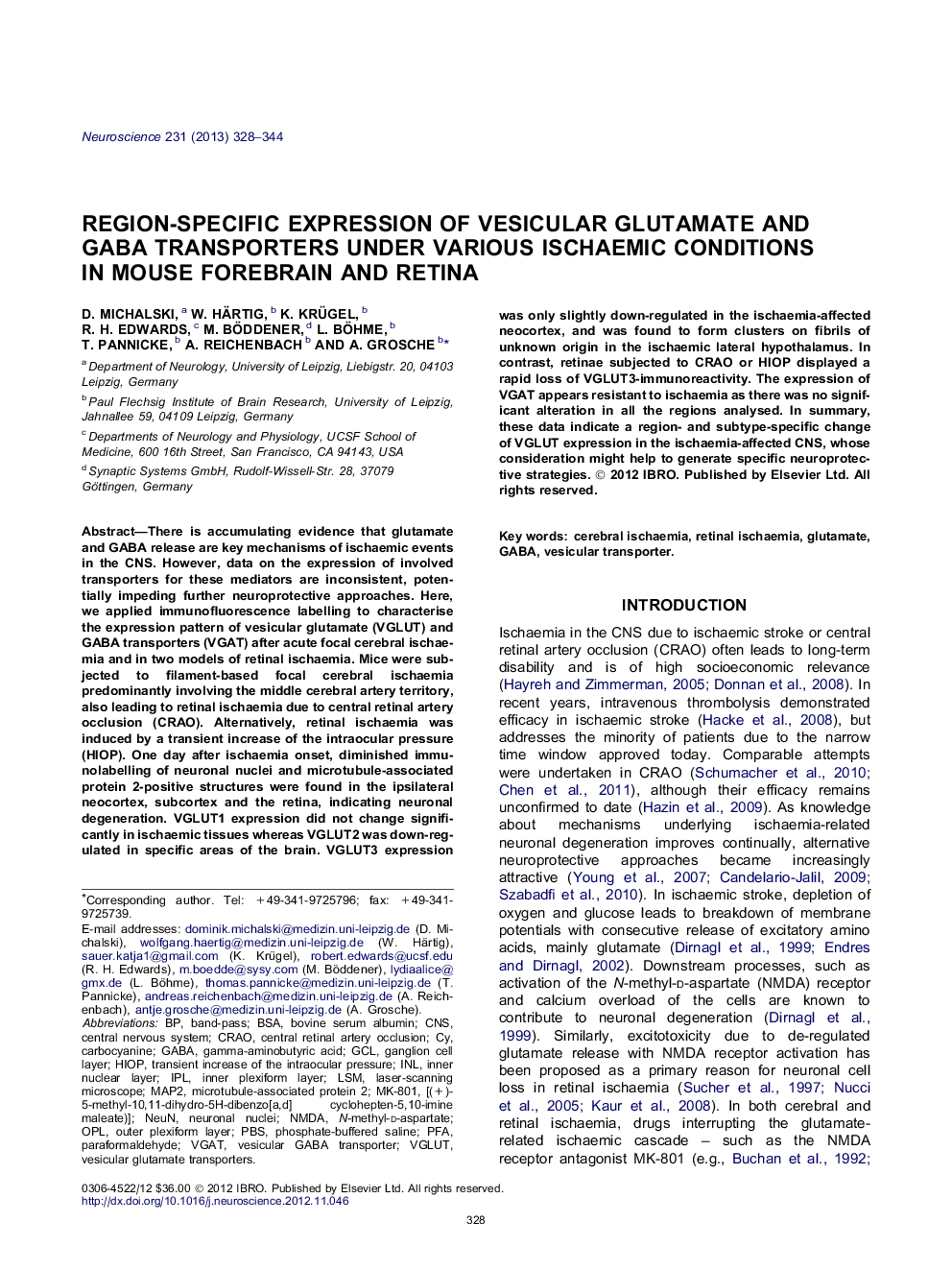| Article ID | Journal | Published Year | Pages | File Type |
|---|---|---|---|---|
| 6275167 | Neuroscience | 2013 | 17 Pages |
There is accumulating evidence that glutamate and GABA release are key mechanisms of ischaemic events in the CNS. However, data on the expression of involved transporters for these mediators are inconsistent, potentially impeding further neuroprotective approaches. Here, we applied immunofluorescence labelling to characterise the expression pattern of vesicular glutamate (VGLUT) and GABA transporters (VGAT) after acute focal cerebral ischaemia and in two models of retinal ischaemia. Mice were subjected to filament-based focal cerebral ischaemia predominantly involving the middle cerebral artery territory, also leading to retinal ischaemia due to central retinal artery occlusion (CRAO). Alternatively, retinal ischaemia was induced by a transient increase of the intraocular pressure (HIOP). One day after ischaemia onset, diminished immunolabelling of neuronal nuclei and microtubule-associated protein 2-positive structures were found in the ipsilateral neocortex, subcortex and the retina, indicating neuronal degeneration. VGLUT1 expression did not change significantly in ischaemic tissues whereas VGLUT2 was down-regulated in specific areas of the brain. VGLUT3 expression was only slightly down-regulated in the ischaemia-affected neocortex, and was found to form clusters on fibrils of unknown origin in the ischaemic lateral hypothalamus. In contrast, retinae subjected to CRAO or HIOP displayed a rapid loss of VGLUT3-immunoreactivity. The expression of VGAT appears resistant to ischaemia as there was no significant alteration in all the regions analysed. In summary, these data indicate a region- and subtype-specific change of VGLUT expression in the ischaemia-affected CNS, whose consideration might help to generate specific neuroprotective strategies.
⺠VGLUT3 is significantly down-regulated after retinal ischaemia and to a lesser extent in cerebral ischaemia. ⺠Ischaemia leads to fibrillary VGLUT3 clusters when affecting the lateral hypothalamus. ⺠Subcortical and cortical ischaemia results in a down-regulation of VGLUT2. ⺠VGLUT1 and VGAT appear stable against ischaemia of the CNS.
